The luck of the US military has weakened significantly since the end of WWII. Indeed, the use of gratuitous carpet bombing has proven to be an ineffective strategy. However, the efforts made by resistance fighters cannot be underestimated. The Cu Chi Tunnels Tour showcases one example of the super human struggle that was carried out in Vietnam. As a result, the Vietnamese ultimately defeated the largest industrialized power in the world.
Cu Chi Tunnels Location
The Cu Chi Tunnels tour is located Northwest of present day Ho Chi Minh City. However, at the time of the Vietnam War, Ho Chi Minh City was named Saigon and it was the capital city of South Vietnam. Additionally, Saigon was the epicenter of US efforts to destroy the resistance of the North Vietnamese Army. The Cu Chi tunnels complex was spread out over a 75 sq mile area that is about a 1 hour drive from modern day Ho Chi Minh City.
Strategic Significance of the Tunnels
Strategically, the Cu Chi tunnels may have been the turning point of the Vietnam War. This is because of the utility of the tunnels used to hide underground troop movements, supplies, hospitals and army headquarters. As a result, the tunnels were an effective staging area to fight the US occupation.
Furthermore, the effectiveness of the tunnels allowed the North Vietnamese to prolong the war and drain the resolve and resources of the US military. Indeed, similar tunnel complexes were implemented throughout most of Vietnam.
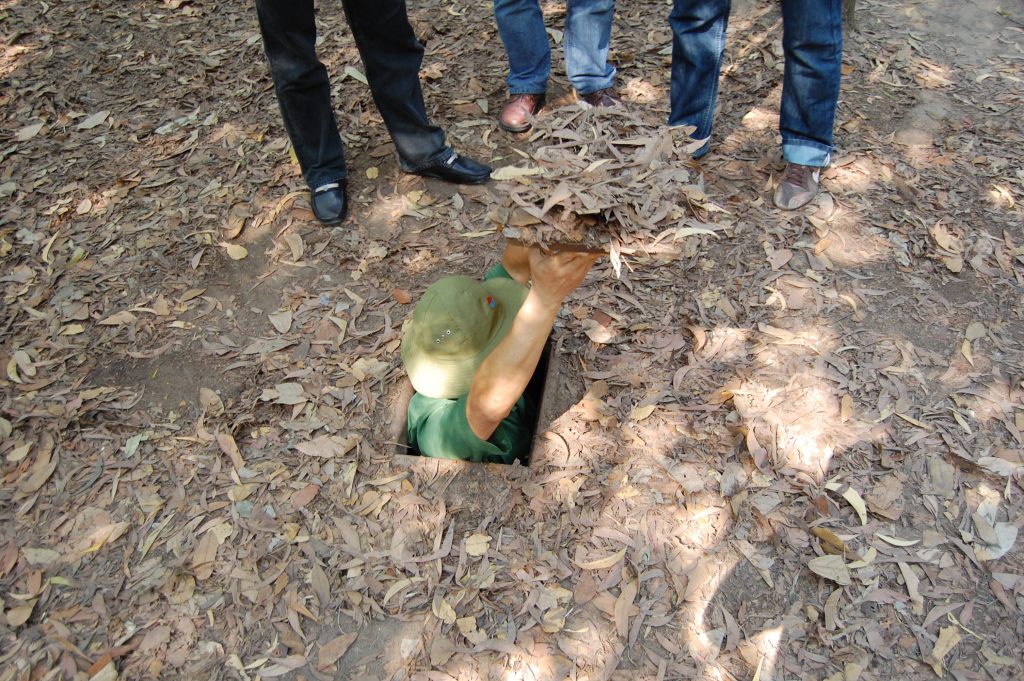

Extreme Underground Living Conditions
The North Vietnamese army endured great hardship living underground. Unfortunately, the Cu Chi tunnels network needed to be shared with unsavory creatures such as poisonous centipedes, snakes, insects, spiders and of course rats!
Indeed, the Viet Cong endured rampant disease and suffering in order to prolong the war effort. As a result of the subterranean living conditions it is estimated that 100% of the underground army had intestinal parasites of some significance. Additionally, half of the troops had malaria at any given time.
US Anti-Guerilla Tactics For Cu Chi Tunnels
Above ground, the US Military had become aware of the Cu Chi tunnel network and especially its effectiveness. As a result of the unconventional nature of the Viet Cong resistance strategy, the US was not sure how to counter it. Indeed efforts to enter the tunnels and engage with the Vietnamese fighters underground proved ineffective.
This was in large part due to the obscurity of the tunnel crawlspaces and the extensive use of deadly booby traps and trapdoors. Additionally, when encountered underground, the North Vietnamese would fiercely engage the intruders.

Similarly, efforts by the US military to gas the Cu Chi tunnel network or drop grenades down the entrance doors of the tunnels also proved ineffective. Fortunately, the Vietnamese resistance fighters had extensive ventilation networks set up to enable the flow of fresh air into the tunnels.
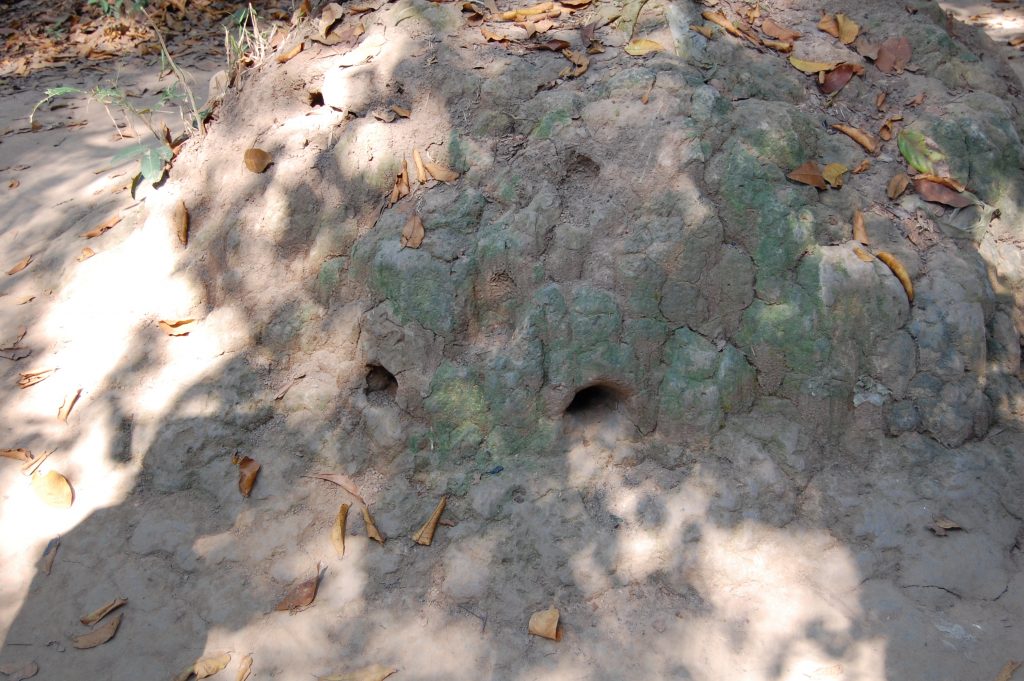
Unsurprisingly, the strategy that the US Military fell back on was carpet bombing. As a result, the American heroes dropped bombs, bombs and more bombs from miles high onto what was once a lush jungle landscape. By the end of the war it was a “pock marked moonscape” devoid of all vegetation.
Eventually, the extensive bombing campaigns began to succeed in neutralizing the effectiveness of the Cu Chi Tunnels. However, by the time that finally happened the American public had lost the will to keep supporting the Vietnam War. Indeed, the tunnels had proven to be an effective means to an end.
The Size of the Cu Chi Tunnels
The average westerner would be too big to enter and travel through the Cu Chi tunnels. Physically, the size of the Viet Cong soldier was considerably smaller which enabled them to effectively use the tunnel network.
In the photos below I am able to enter one of the actual tunnels. However, I would surely get stuck if I had tried to continue further into the network.
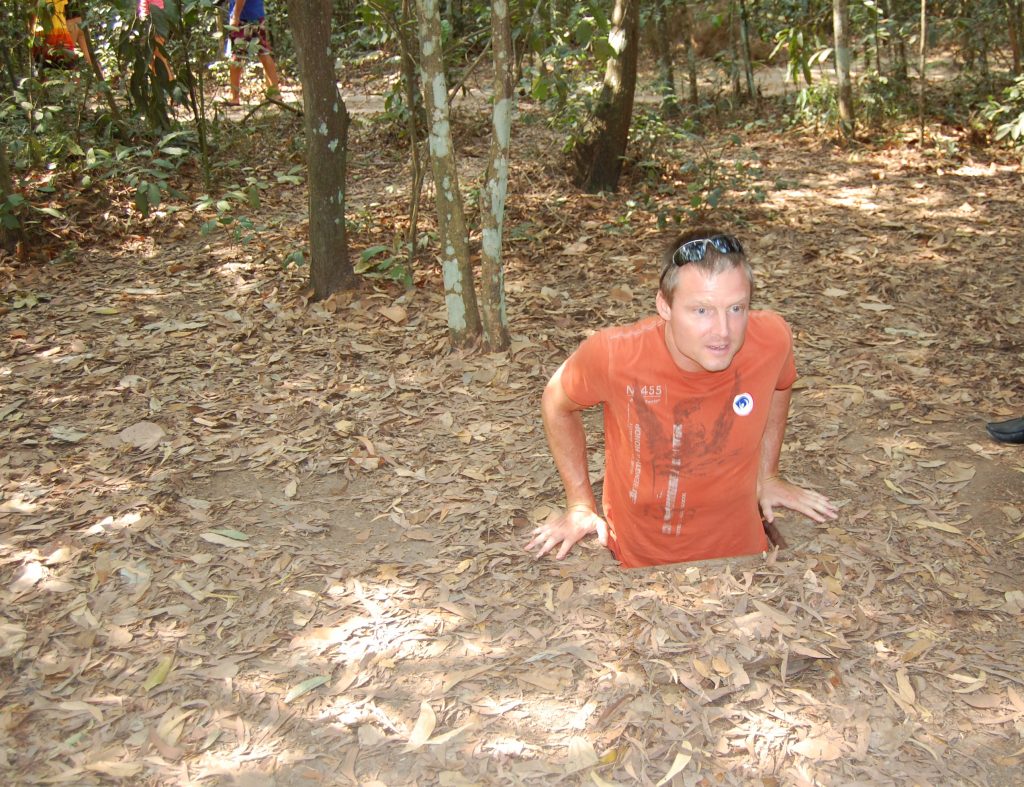

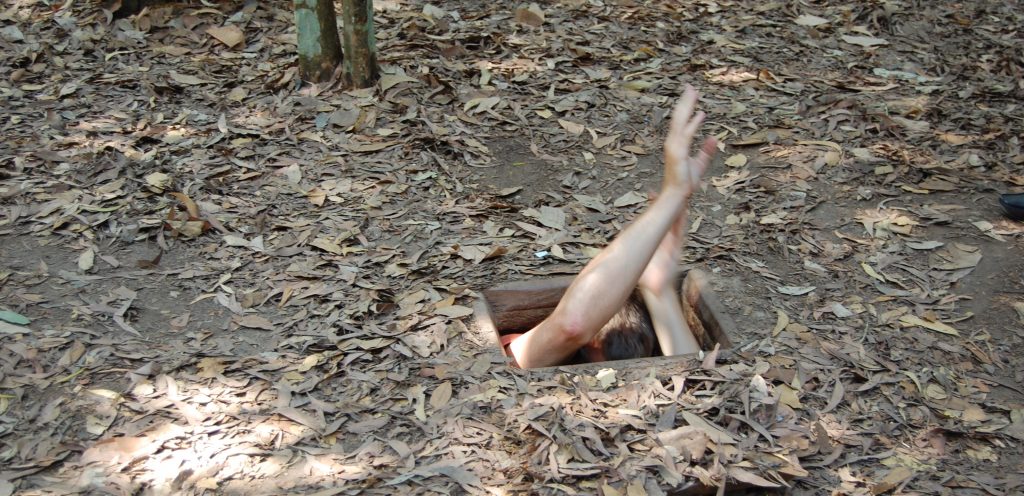

Cu Chi Tunnels for Tourists
Fortunately, there was a section of the Cu Chi Tunnels Tour that tourists could enter and travel through. Realistically, this may have been a former supply tunnel because it was much larger than the majority of the real tunnels.
The tourist tunnel extends for 20 or 30 meters and it is about 20 feet underground. The tunnel is also well lit, which is not a convenience that the Viet Cong army would have been able to enjoy.
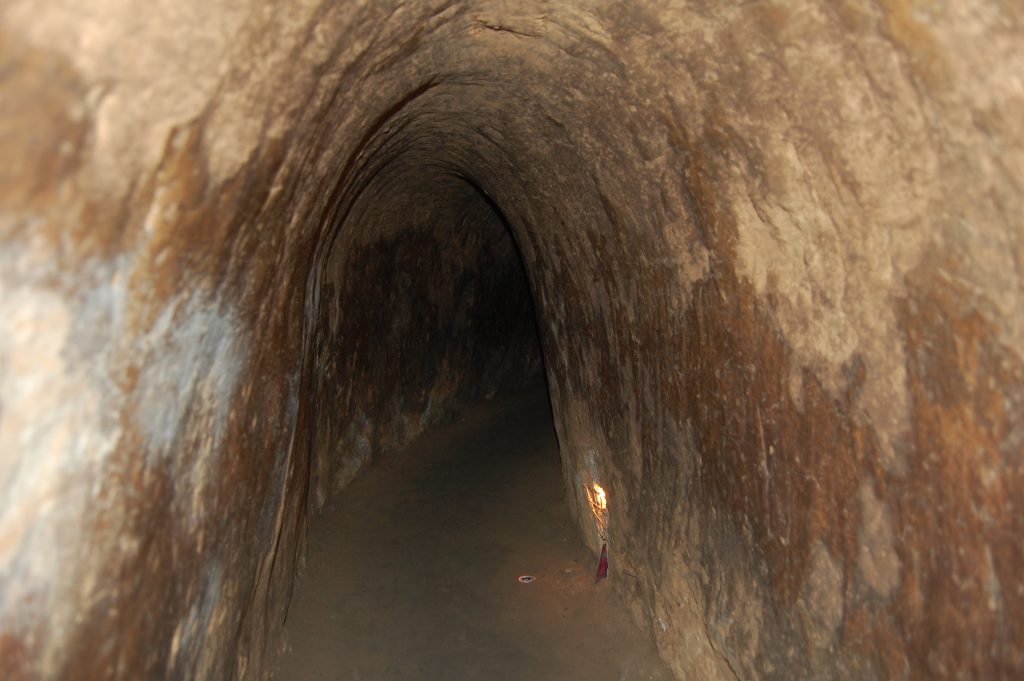
The Real Cu Chi Tunnels

Limited Resources of the Viet Cong Fighters
The Viet Cong did not have the same standard of equipment as the US military. However, what the Vietnamese lacked financially was made up for with innovation. Indeed, the Viet Cong fighters wore sandals that were constructed out or recycled rubber from car tires.
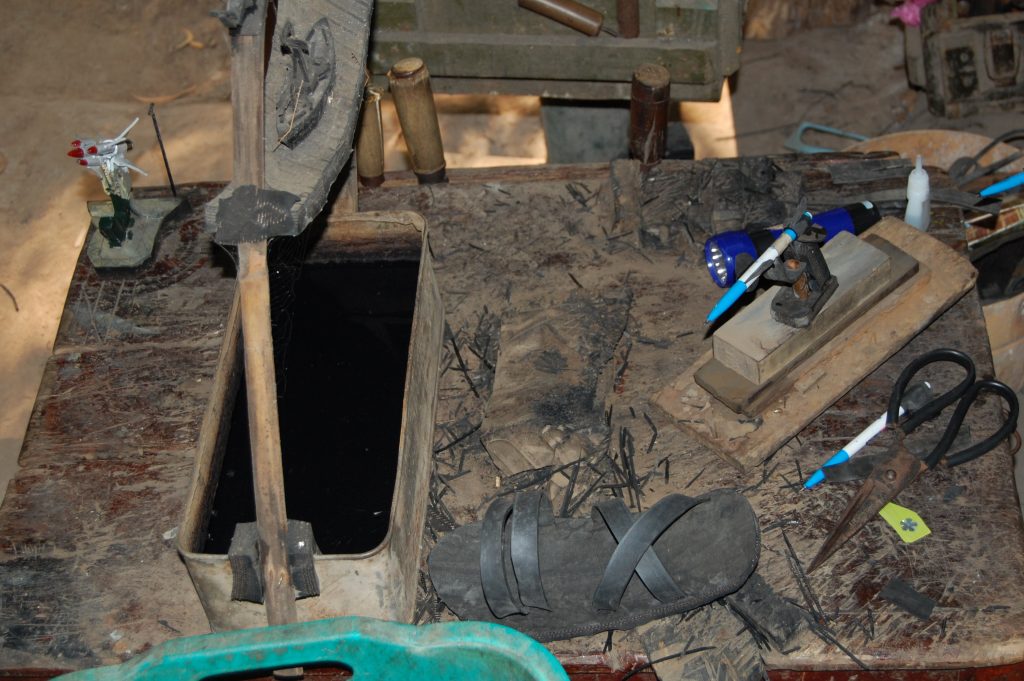
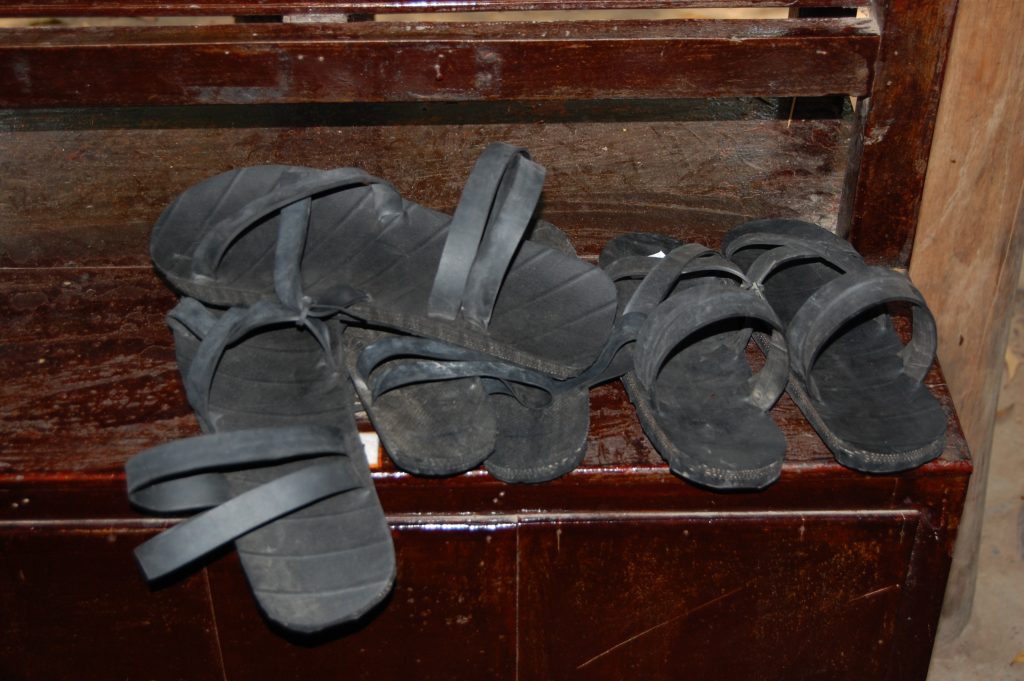
Limited Food Resources for the Viet Cong
The Viet Cong troops living in the tunnels would work underground during the day and emerge in the evening. Under the cover of darkness the Viet Cong could engage in military maneuvers and also tend to their agricultural plots. As a result of the logistics issues, the Viet Cong army also needed to grow their own food.

Surrender of the US Military
Well, I don’t have much to say here as the conclusion is pretty obvious. In the end, size doesn’t matter as much as the reason why you are fighting. This is the story of David and Goliath, although in the biblical story the only fatality was Goliath.
Unfortunately, the death and destruction caused by the US Military during the Vietnam War would reach apocalyptic proportions. The secret carpet bombing of the US Military had spread far beyond the borders of Vietnam.
Indeed, neighboring Laos and Cambodia would become collateral damage of the US Military’s carpet bombing campaigns resulting in the deaths of millions of civilians. Nonetheless, it was the innovation and relentless fortitude evidenced by the Cu Chi Tunnels which allowed the Viet Cong to ultimately succeed.

